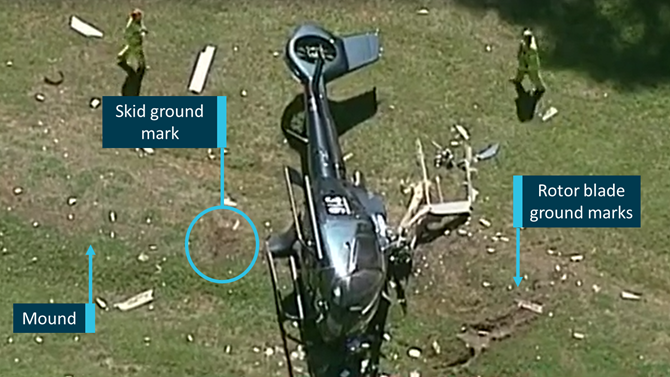An Airbus EC130 was substantially damaged when, on take-off, it yawed to the left greater than the pilot was expecting, then rolled and impacted the ground after the left skid contacted a raised mound.

The helicopter was departing a private property near Mansfield, Victoria, on its return to Melbourne’s Moorabbin Airport on January 19, 2019 with a pilot and two passengers on board.
The pilot would later recall to Australian Transport Safety Bureau (ATSB) investigators that he lifted off the helicopter more rapidly than he normally would, without first letting the helicopter ‘rest’ lightly on the skids and applying control inputs to lift it gently into a balanced, controlled hover for the climb out.
“The higher-than-normal application of control inputs resulted in the torque from the main rotor not being balanced by the anti-torque from the Fenestron tail rotor,” said ATSB director transport safety Stuart Macleod.
“Consequently, once the helicopter was off the ground it yawed significantly to the left.”
The ATSB’s investigation report notes that the EC130 is equipped with a shrouded ‘Fenestron’ tail rotor, which requires greater right pedal input to overcome torque from the main rotor during lift-off compared to a helicopter with a conventional tail rotor. The pedal control inputs are also not linear with respect to the effect on helicopter yaw.
Macleod noted the pilot reported that for the accident flight he principally applied cyclic control rather than the required full application and maintenance of opposing right, tail rotor pedal input. When these inputs did not arrest the yaw rate, the pilot assessed that the best option was to land the helicopter.
“This accident demonstrates how critical it is that pilots understand their aircraft’s characteristics so that they can anticipate its response when becoming airborne, and are not surprised by how it handles,” Macleod said. “The rapid development of the accident sequence — about five seconds — also illustrates the limited time for pilot actions and decisions in such hazardous situations, which fortunately did not result in serious injury in this case.”
In July 2019, about six months after the accident, Airbus Helicopters published a safety information notice to highlight the potential for unanticipated and rapid left yaw in helicopters with clockwise rotating main rotors. It further noted that even if the pilot’s response was prompt, the yaw might not immediately subside, and lead to the pilot thinking that the input was ineffective.









